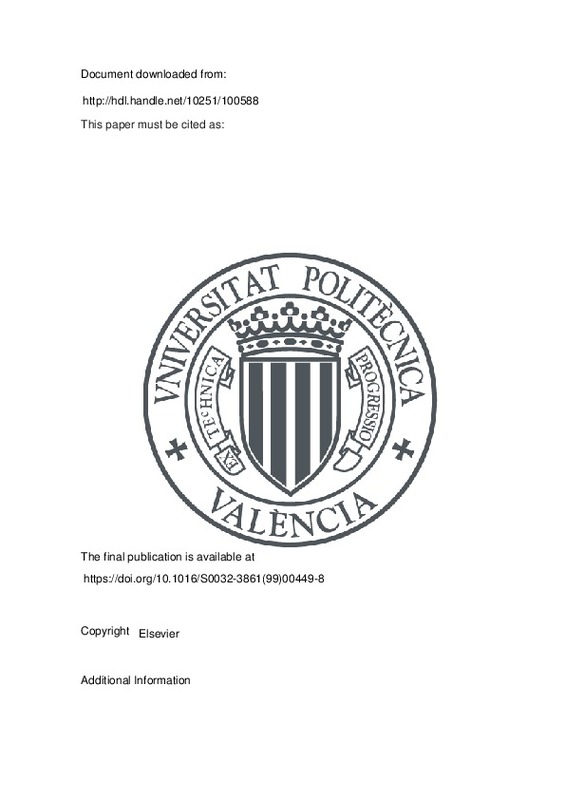JavaScript is disabled for your browser. Some features of this site may not work without it.
Buscar en RiuNet
Listar
Mi cuenta
Estadísticas
Ayuda RiuNet
Admin. UPV
Comparative study of amorphous and partially crystalline poly(ethylene-2-6-naphthalene dicarboxylate) by TSDC, DEA ,DMA and DCSC
Mostrar el registro sencillo del ítem
Ficheros en el ítem
| dc.contributor.author | Canadas, J.C.
|
es_ES |
| dc.contributor.author | Diego, J.A.
|
es_ES |
| dc.contributor.author | Sellares, J.
|
es_ES |
| dc.contributor.author | Mudarra, M.
|
es_ES |
| dc.contributor.author | Belana, J.
|
es_ES |
| dc.contributor.author | Díaz Calleja, Ricardo
|
es_ES |
| dc.contributor.author | Sanchis Sánchez, María Jesús
|
es_ES |
| dc.date.accessioned | 2018-04-19T04:13:10Z | |
| dc.date.available | 2018-04-19T04:13:10Z | |
| dc.date.issued | 2000 | es_ES |
| dc.identifier.issn | 0032-3861 | es_ES |
| dc.identifier.uri | http://hdl.handle.net/10251/100588 | |
| dc.description.abstract | [EN] A comparative study of the relaxational behavior of amorphous and partially crystalline poly(ethylene-2,6-naphthalene dicarboxylate) (PEN), has been carried out by thermally stimulated depolarization currents (TSDC), differential scanning calorimetry (DSC), dynamic mechanical analysis (DMA) and dynamic electric analysis (DEA). As received, PEN (partially crystalline) shows, in the temperature range from -150 to 200 degrees C, four relaxations located, in increasing temperature order, around -70 degrees C (beta), 60 degrees C (beta*), 130 degrees C (alpha) and 170 degrees C (rho). Amorphous PEN has been crystallized thermally heating up to different temperatures between 170 and 200 degrees C. The DSC measurements of these samples show a small endothermic premelting peak, once the crystallization of the sample is completed. This peak increases and shifts towards higher temperatures as the sample is further thermally treated. Associated with the presence of this endothermic peak, the rho relaxation passes through a maximum and presents a sharp decrease as it is further thermally treated. The alpha-relaxation, detected by dynamic mechanical as well as dielectric (ac) measurements, shifts to higher temperatures and broadens as the crystallinity degree increases. The kinetic parameters of the observed relaxations have been determined fitting experimental data to standard models. | es_ES |
| dc.language | Inglés | es_ES |
| dc.publisher | Elsevier | es_ES |
| dc.relation.ispartof | Polymer | es_ES |
| dc.rights | Reserva de todos los derechos | es_ES |
| dc.subject | Crystallinity | es_ES |
| dc.subject | Thermostimulated depolarization current | es_ES |
| dc.subject | Dynamic mechanical analysis | es_ES |
| dc.subject.classification | MAQUINAS Y MOTORES TERMICOS | es_ES |
| dc.title | Comparative study of amorphous and partially crystalline poly(ethylene-2-6-naphthalene dicarboxylate) by TSDC, DEA ,DMA and DCSC | es_ES |
| dc.type | Artículo | es_ES |
| dc.identifier.doi | 10.1016/S0032-3861(99)00449-8 | es_ES |
| dc.rights.accessRights | Abierto | es_ES |
| dc.contributor.affiliation | Universitat Politècnica de València. Departamento de Termodinámica Aplicada - Departament de Termodinàmica Aplicada | es_ES |
| dc.description.accrualMethod | S | es_ES |
| dc.relation.publisherversion | https://doi.org/10.1016/S0032-3861(99)00449-8 | es_ES |
| dc.description.upvformatpinicio | 2899 | es_ES |
| dc.description.upvformatpfin | 2905 | es_ES |
| dc.type.version | info:eu-repo/semantics/publishedVersion | es_ES |
| dc.description.volume | 41 | es_ES |
| dc.description.issue | 8 | es_ES |
| dc.relation.pasarela | S\17517 | es_ES |







![[Cerrado]](/themes/UPV/images/candado.png)

